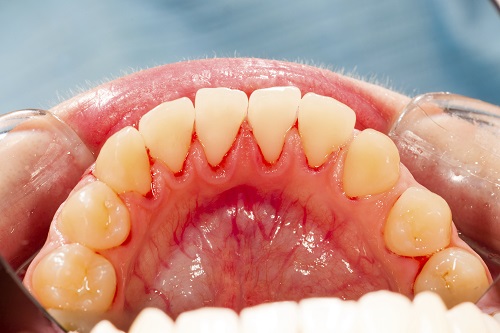South Ogden
What Goes Into The Diagnosis Of Gum Disease?

Have you been told that you have gum disease? If you were recently told that you have gum disease, you may be wondering how you get diagnosed. We have some details for you, so that you know how you were diagnosed, and how gum disease is treated.
What Is Gum Disease?
Gum disease goes by two other names; gingivitis (stage 1) and periodontitis (stages 2 and 3). No matter what name you call it, gum disease is not a good thing at all. If it is left untreated, gum disease can cause gum damage and gum loss, as well as tooth loss. Gum disease is one of the main reasons people lose teeth.
How Is Gum Disease Diagnosed?
There are several ways that we diagnose gum disease. In stage one, we usually are able to diagnose gingivitis by looking at your gums and talking to you about what your gums are doing. If you have stage one gum disease, your teeth are red and inflamed.
Your gums could appear bright red or even purple. Your gums might also be tender or painful to the touch. You could have bleeding gums when you brush or floss. Many people with stage one gum disease also have bad breath.
Sadly, stages two and three are much easier to diagnose. With periodontitis, you develop pockets between your teeth and gums. These pockets become infected, and the infection can cause your gums to recede, change color, and cause all sorts of problems for your mouth.
If you have been diagnosed with gum disease, there are treatments available to help. The earlier you get treated, the better off you are. In many cases, we can reverse the effects of gum disease. Even if your gum disease has progressed too far to reverse, we can make the disease better, and save your teeth. Why not contact us today, and let’s get started on the path to better dental health?
